We have too many things
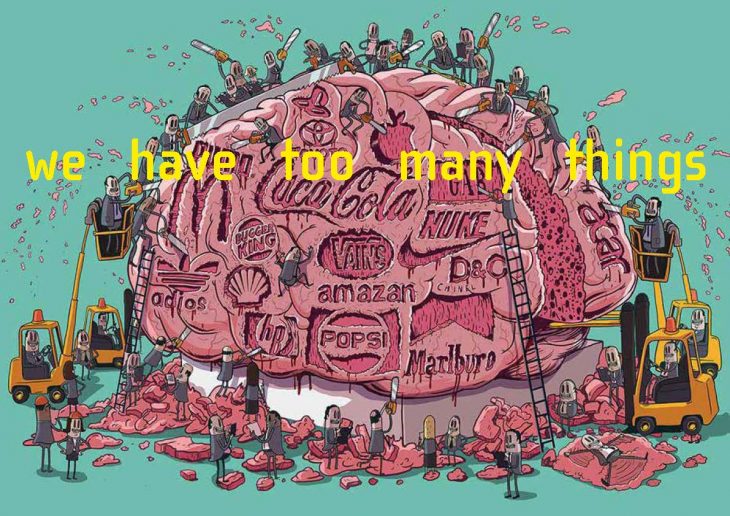
To state the obvious: we have too many things. This is not just an inconvenience. We would need the resources of over five planets Earth to supply with the demand of a global population if it consumed like an American citizen. Two Earths with the Spanish consumption average.
The numbers go on and on, numbers that prove we are draining our planet resources faster than they can be regenerated:
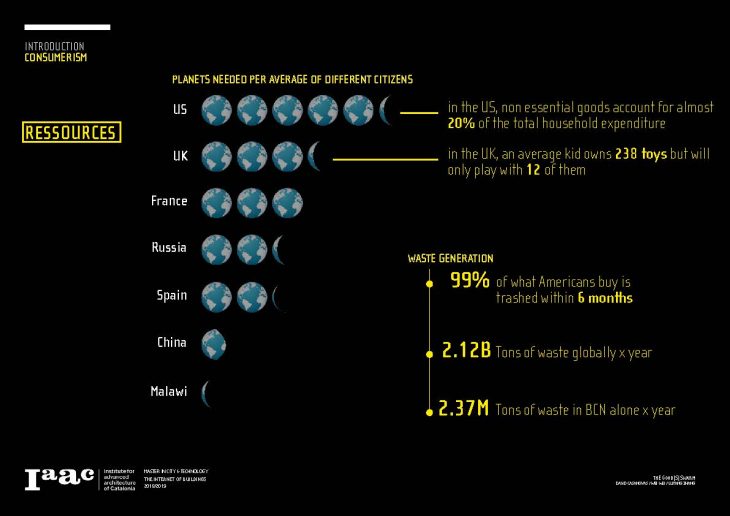
The traditional diagram for the logistics chain model follows these steps:
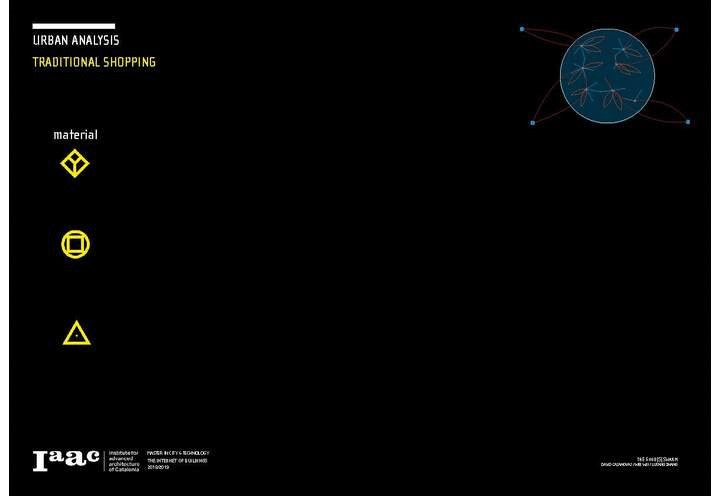
First, the collection or extraction of materials. Then the manufacturing takes places in either one or many different locations.. Products are then taken into logistics centres, and this step can often iterate in a sequence of logistic centres following a treelike diagram that distributes the products globally. They are then shipped to the local stores, where the users would purchase them. Use them, and trash them. A small percentage of them would then be recycled, or reused, whereas the rest would be sent to landfills.
This model has, however, been fundamentally altered lately. E-commerce started slow, but as society eases into the digital world, overcoming their initial trust issues, so does their consumption habits, making it undeniable that it constitutes a highly disruptive technology that has fundamentally changed the way we get things.

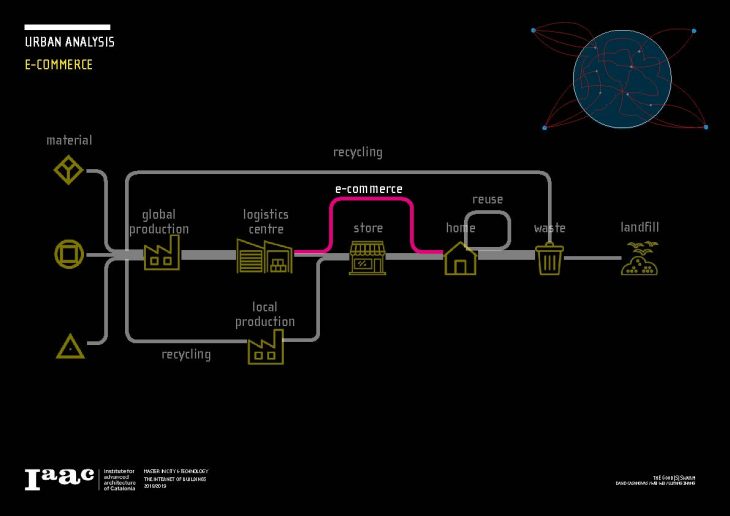
Two main points drive this project: on the one hand, we believe most of the biggest problems the city faces are directly related to how we get things: from traffic and therefore pollution, to energy consumption, public space occupation, but also local economy vs monopoly.
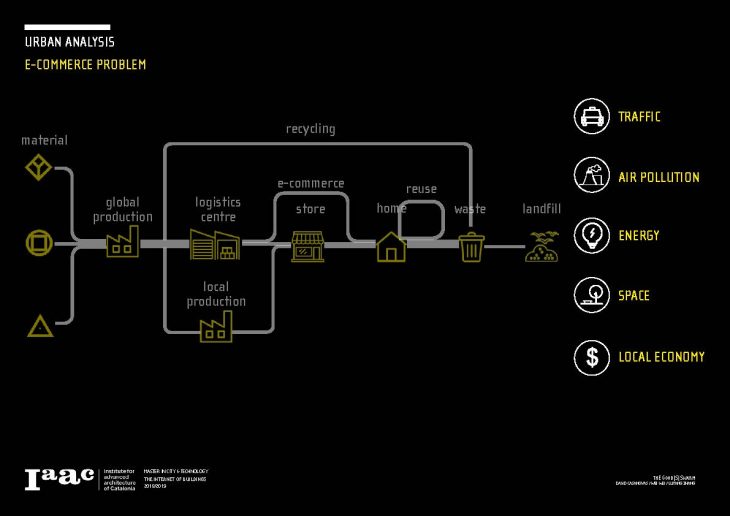
Current challenges
Traffic
In Barcelona in 2014, over seven million trips were carried out, both internal, and in connection to other municipalities. We are lucky enough to have a quite walkable city, where 49% of the internal trips were done by foot or bicycle. However, the numbers don’t look so good on the connection trips. Private motorised vehicles constitute 41% of the trips, of which vans account for a 26%.
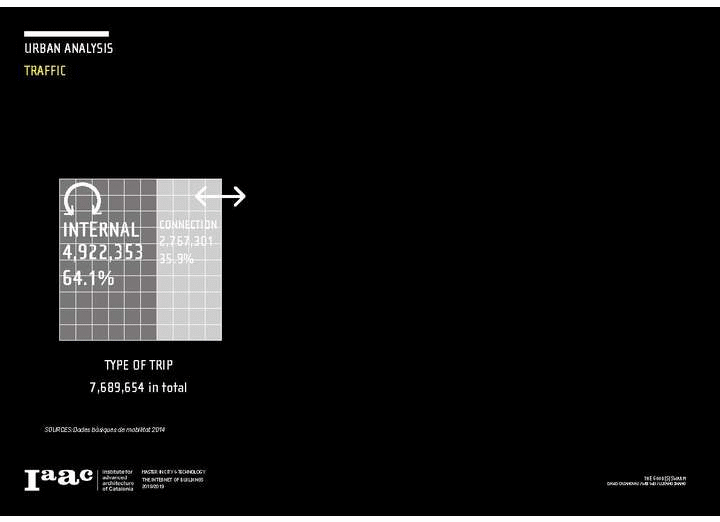
We can safely say logistics have a big role in city traffic.
Energy
We know energy is being spent on every step of the logistic chain, where the extraction of the material and the manufacturing are normally the biggest energy points. However, the moving of these items between each step of the chain is often responsible for the biggest energy spent, as well as the carbon emissions. This is particularly true for the products bought from large multinationals, that travel large distances to reach the end user.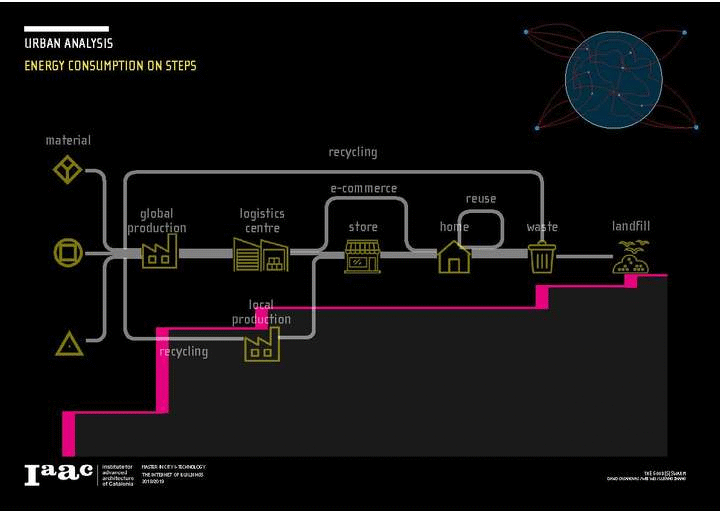
When it comes to Barcelona, we know the city spends about 50% of its total energy expenditure directly or indirectly in goods.
Space occupation
Space occupation is a tricky thing to quantify, but a good approximation starts with these numbers: only a 27% of the total area of Barcelona is public space, and a 42% of that space is given to cars. Leaving pedestrians with approximately a 14% of the space, and accounting for 9.9m2 of public space per inhabitant.
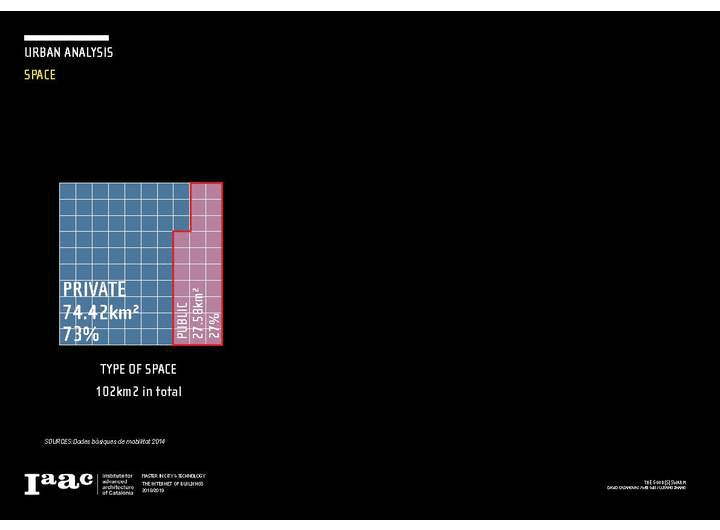
Local economy
With the newtool, the e-commerce, one would think the offer would expand, democratising the experience of offering and getting products. But the landscape is mostly the opposite. Multinationals control a 99% of the online market, with 4 or 5 companies (Amazon being the biggest one of them) holding the monopoly of the online commerce.
This puts the small and medium commerce (which constitute most of Barcelona’s economic fabric) at a great disadvantage, as they cannot possibly compete with the convenience of a digital marketplace.

On the other side of the coin, we believe in this change of paradigm lies an opportunity. The capacity of connecting buildings as a network offers us the chance to build a local network of buildings that can counter the global network with a local one, that shares goods locally and responsibly on one side, but also conveniently on the other, making it both good for the planet, and good for the user.
We call it the good(s) swarm (pun intended).
The good(s) swarm
The good(s) swarm is a local sharing platform that uses a distributed storage system, a network of buildings and a fleet of drones to operate at Sant Martí scale.

Local sharing platform
A local sharing platform is a digital space for people to share their goods (including borrowing, lending, donating, but also renting or selling). It will involve all citizens living in Sant Martí, but also local shop owners, and local makers.
A distributed storage
Storage spaces are the biggest invaders of the city space. In Sant Martí, a large number of spaces are used for storage and logistics. They are that large room in the back of the stores where everything is stored, that space that is actually built into the courtyard, occupying what should be green public spaces. They are the underused warehouses we see in every corner of the district, with no activity to the street or for the neighbours, just storage with tons of vans and SUV coming in and out to distribute goods.
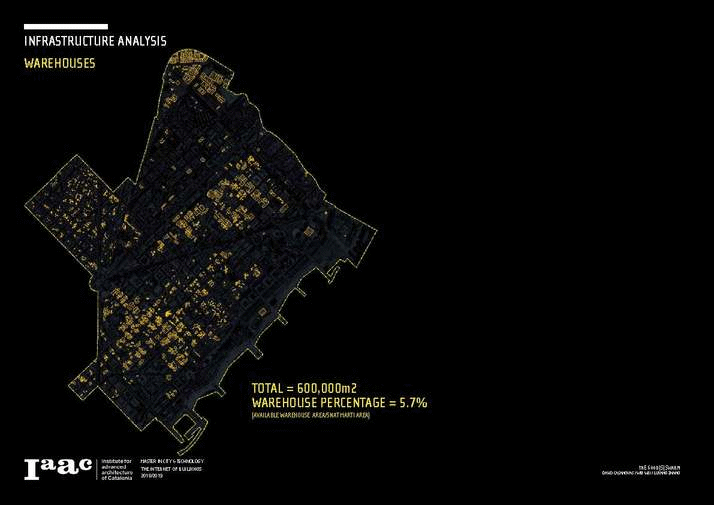
A distributed storage will use spaces that are now underused or that will become obsolete. Underused are the flat roofs of Sant Martí, as underused will be the underground spaces currently used to park cars that in the future we will be sharing. Underused are also our balconies, and our windows.
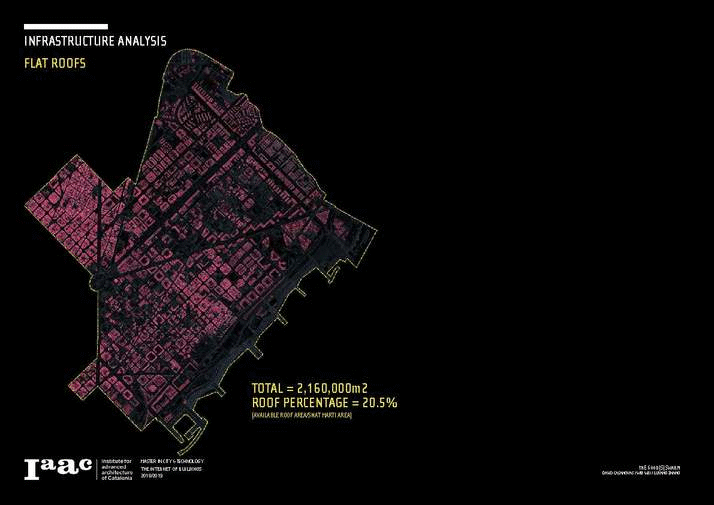
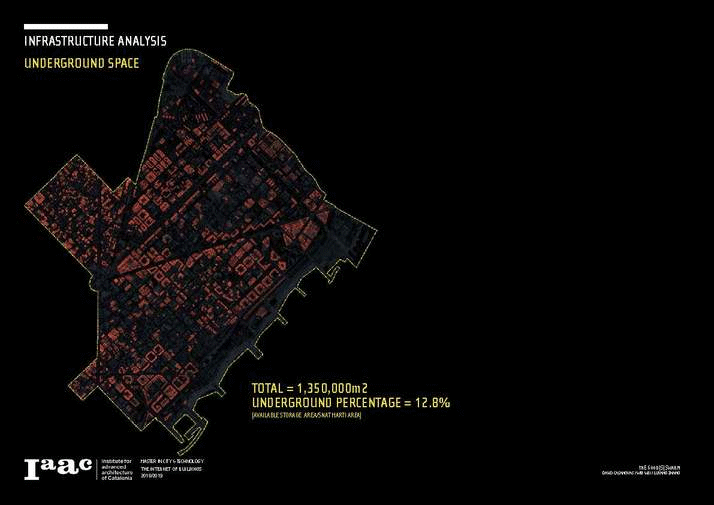
A distributed storage means our goods don’t have to be stored in one place and shipped throughout, but can be intelligently stored using geolocalisation.
A fleet of drones
Drones are the messengers that will deliver the goods from user to user. According to our calculations, and due to the high efficiency of drones and a distributed storage, with a fleet of only 31 units, we can cover the whole current online purchases of the whole neighborhood, providing products faster and rewarding proximity, to encourage second hand sharing between the users.
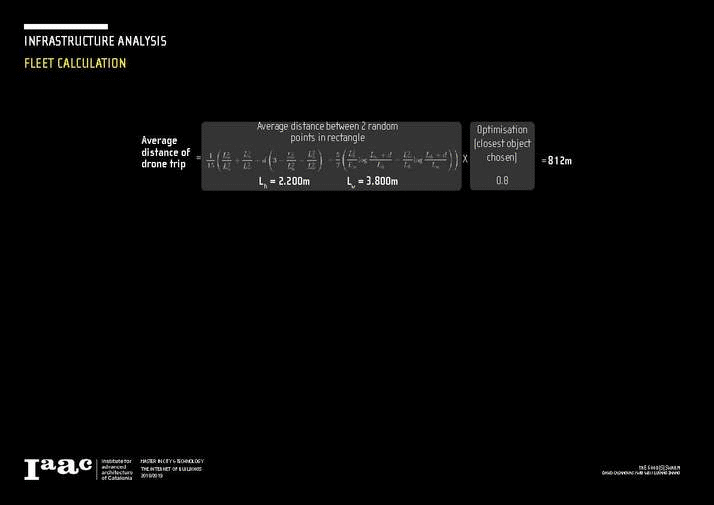
The distributed storage will act as landing and recharging stations for the drones, whether that is energy collected from solar panels (roof) or from the building’s available energy (underground space sockets).
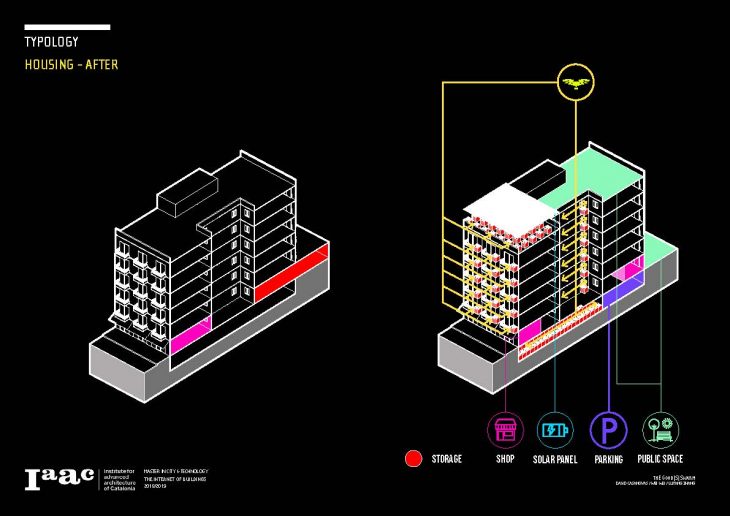
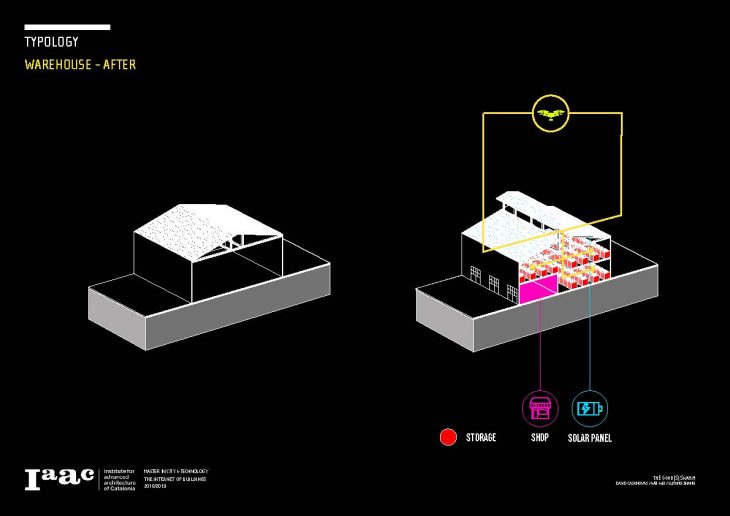
Protocol
A centralised app will provide the input into the building’s database, whether that is a new item to be shared, or a request for an item for a specific time and place.
Once a request is placed, the buildings will communicate to find all available products fitting that description. The system will find closest drones and calculate the most efficient route to the destination.
The app will let the user know all the options, both free second hand options and new, or rental ones, organised by energy saving.
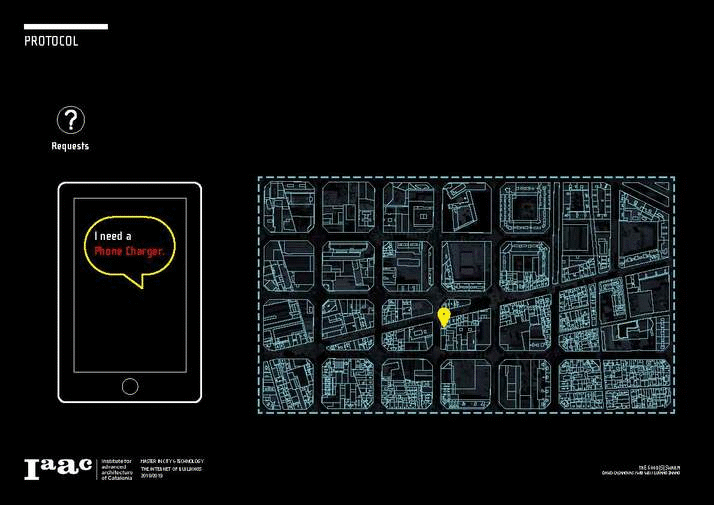
Impact
A change in the way we get things that both encourages us to share our goods and to get things locally will have an impact on traffic and therefore pollution, energy spent and the increase of local competitiveness, that will go from being at a disadvantage, to being at a clear advantage in a system that rewards proximity.
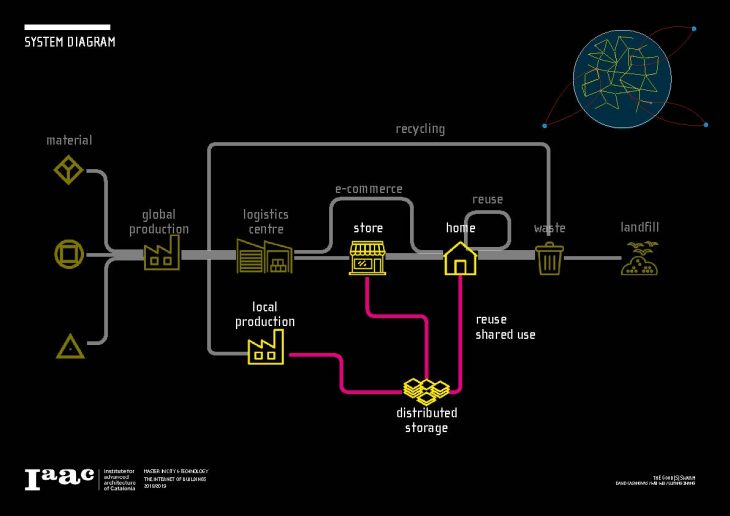
Last but not least, in a city with the high density of Barcelona, it will have a meaningful impact on space occupation of logistics in the city.
We believe with the full implementation of the system in a district level, we can render obsolete most of the warehouses that now occupy the courtyards of Sant Martí, and return this space to the citizens. With a decreased logistics traffic, we can also remove a percentage of the lanes of the neighbourhood, paving the ground for a greener and more pedestrian oriented city, which is undoubtedly where modern cities need to head to.
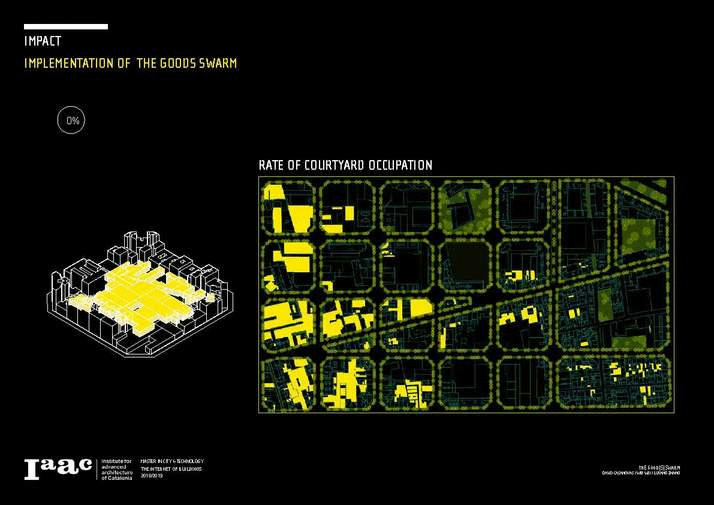
We tend to be reluctant to change, and a city populated by a swarm of drones can at first seem intrusive. But we certainly accepted living among cars that took over our public space and polluted our streets, so it shouldn’t be hard to imagine a city where the streets are returned to the citizens and a silent fleet of drones tirelessly carries our local goods above the buildings, making our cities more autonomous, resilient, and connected.
And in due time, we might be the ones carried through the air, really releasing the ground space to the social use of the citizens. But that is the space for another project.
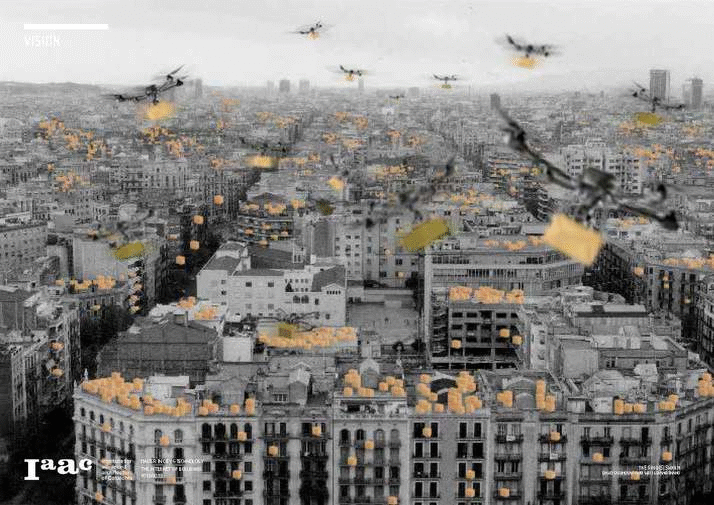
The good(s) swarm is a project of IaaC, Institute for Advanced Architecture of Catalonia developed at Master in City & Technology in (2018/2019) by:
Students: David Casanovas Tatxé, Wei Wei, Luyang Zhang
Senior Faculty: Areti Markopoulou
Faculty Assistant: Alex Mademochoritis